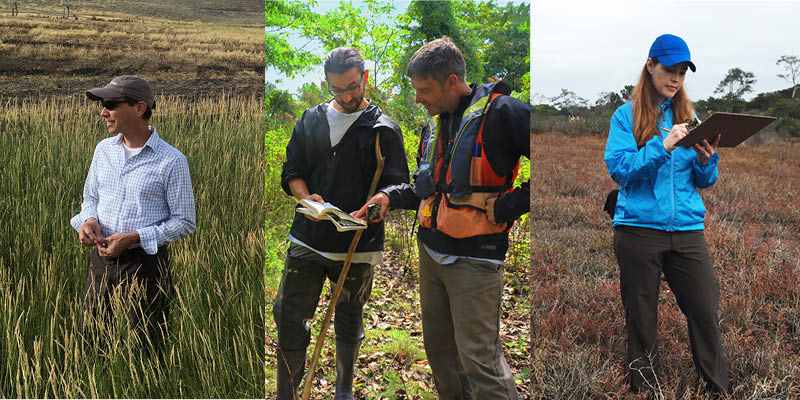Biohabitats Projects, Places, and People
By Amy Nelson
Exciting News for the Green Building Community…and for Earth
This fall, we formed a new, strategic alliance with McLennan Design, an internationally known regenerative architecture, planning, and product design firm. Founded by designer, author, and green building pioneer, Jason F. McLennan, who is known for his groundbreaking work in creating the Living Building Challenge, McLennan Design focuses exclusively on deep green projects with goals of net-zero energy and/or water, and projects aimed at regenerating the environment and economy. Grounded in shared values of environmental and social responsibility, this new partnership allows us to offer comprehensive regenerative design services.
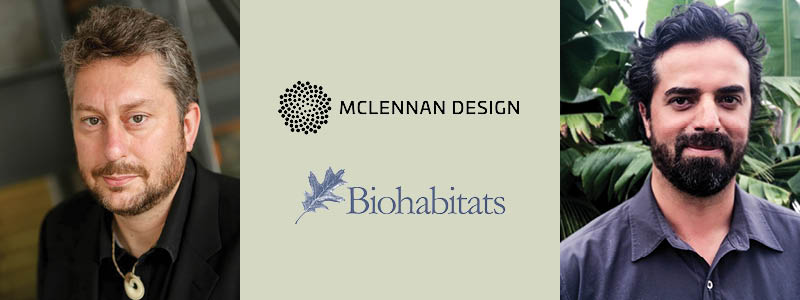
We also shared the news that biologist and Certified Biomimicry Professional, Juan Rovalo has joined Biohabitats’ Cascadia Bioregion team. As a Senior Ecologist and Integrated Design Specialist, Juan is applying his passion for integrating ecology and design to projects throughout the Pacific Northwest and beyond. Working out of McLennan Design’s offices in Bainbridge Island, Washington, he is also helping to expand our reach to Meso-America, the Caribbean and other parts of the world. Before joining Biohabitats, Juan was the founder and Principal of In Site, where he helmed numerous interdisciplinary ecological projects in eight countries over 15 unique ecoregions. He holds a B.S. in Biology from Universidad Nacional Autónoma de Mexico and an M.S. in Biomimicry from Arizona State University.
New Book By Dr. John Todd Coming Soon
Ecological engineering pioneer and longtime Biohabitats collaborator, Dr. John Todd has a new book coming out! Dr. Todd’s new book, “Healing Earth: An Ecologist’s Journey of Innovation and Environmental Stewardship” will be available on Jan. 29. Look for our staff reviews of this book in the next issue of Leaf Litter. In the meantime, you can pre-order your copy at Amazon.com.
Projects
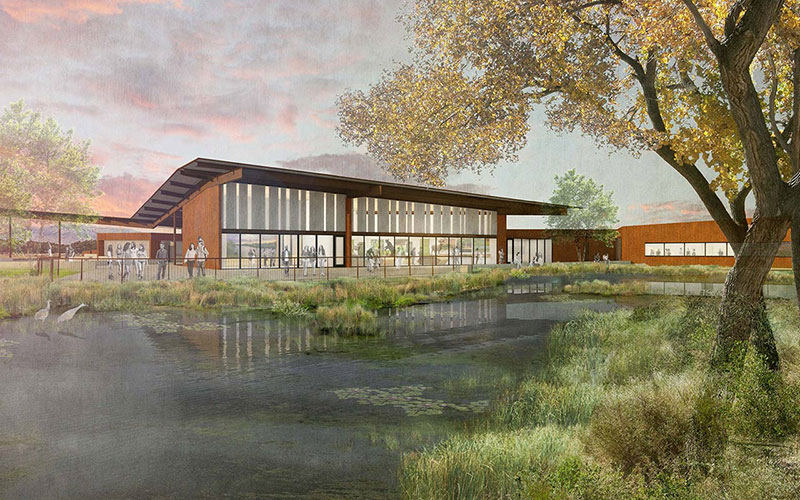
The Southwest’s First Urban Wildlife Refuge Showcases Ecology and Water-Wise Design
Just south of downtown Albuquerque, a 570-acre swath of land that had long been used for agriculture is being transformed into the Southwest’s first urban wildlife refuge. Flanked by the I-25 freeway to the east and the Rio Grande to the west, the Valle de Oro National Wildlife Refuge offers visitors unique opportunities to encounter nature. Many of these opportunities, including a bosque-inspired wetland habitat feature, will be housed in or adjacent to the Refuge’s new Visitor Center, a welcoming, LEED-certified demonstration of sustainable design appropriate for an arid climate. The design-build team for the Visitor Center is led by the locally-based, native-owned joint venture CF Padilla-Brycon, in collaboration with Formative Architecture and Weddell Gilmore. As a member of the team, we are designing the wetland feature and an onsite wastewater treatment system. The wetland, which will be fed by rainwater and an onsite groundwater well, will enable visitors to experience a southwestern riverine wetland ecosystem up close. Its variable water depths will support a variety of native plants that in turn provide habitat for local wildlife. We’re honored to be involved in this project will keep you posted on its progress! For more information, contact Erin English.
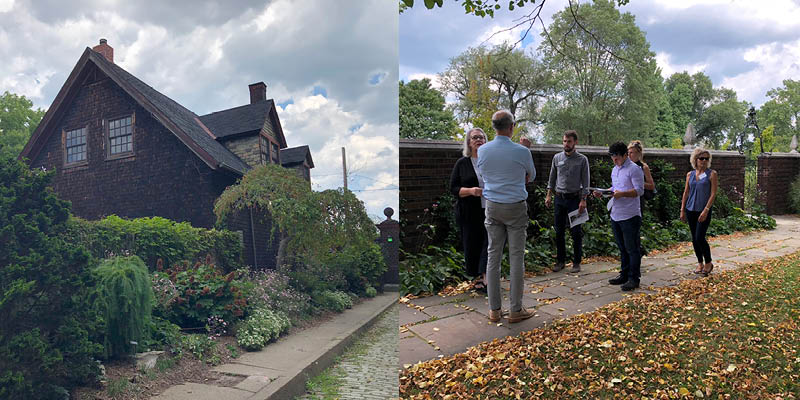
From Rust Belt to Regeneration
Established in 1893 as a verdant respite from the steel mills and factories that once dominated Pittsburgh, the Phipps Conservatory has become a hub for thought leaders in sustainability, and a powerful force in the city’s transformation from industry to long-term livability. The Conservatory not only demonstrates sustainability through its educational programs, but models it in the design of their facilities, which include a LEED Platinum production greenhouse and the Center for Sustainable Landscapes, a certified Living Building. Going one step further, the Conservatory is applying a biophilic process in the design of its newest project, a renovation of its Garden Center in Mellon Park, which is housed in the former carriage house of banker and industrialist Richard B. Mellon. Facilitated by the 7Group, a collaborative of leading visionaries in regenerative design, the process began with a ‘biophilic’ exercise to examine the patterns of life in the site’s landscape and immerse each member of the design team in that landscape. As one of those team members, we were thrilled to have the opportunity to slow down, closely observe and experience the surrounding park as we learned about the site’s natural and cultural history. The design team is led by Rothschild Doyno Collaborative, and our role is to develop the water infrastructure engineering for onsite wastewater/greywater and rainwater harvesting and ensure that the project meets the rigorous standards of the Living Building Challenge’s Net Positive Water Imperative. We can’t wait to further immerse ourselves in this project and transform a site once associated with wealthy industrialist into a“pollinator” that welcomes and inspires all community members to care about and cultivate a relationship with the landscape. For more information about this project, contact Erin English.
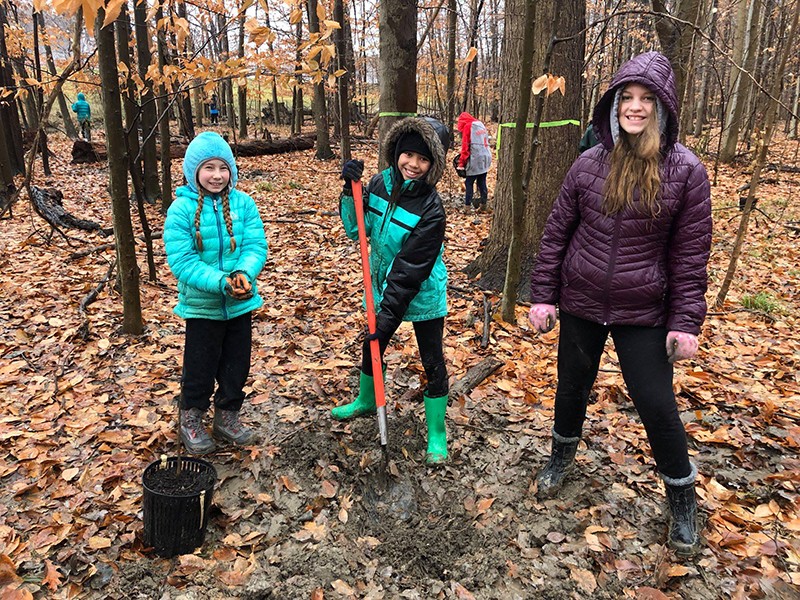
Sometimes Innovation Means Getting Your Hands Dirty
Earlier this month, students of Northeast Ohio’s Willoughby-Eastlake School of Innovation braved the cold to install native plants, along with herbivory protection, at the site of a newly restored creek which flows through school property. The creek, a direct headwater tributary to Lake Erie, had suffered decades of degradation caused by fast-flowing stormwater from surrounding development. Along with the Cuyahoga Soil and Water Conservation District, we’ve been working with students, staff, and parents associated with the STEM-based school to restore stability, ecological function, and habitat to the creek. Together, we are transforming the creek into a living Land Lab where students will be able to engage in hands-on science learning long into the future. Students have been involved with this project from its beginning. After helping us assess the creek’s initial conditions by sampling water quality, they participated in a design charrette, where they shared their ideas and unique perspectives as future users and stewards. The monitoring of water quality, invasive species, and habitat will be integrated into the school’s learning experience for the foreseeable future. A school that engages its students in ecological restoration, fosters environmental stewardship, and provides kids with the opportunity to get outside and experience first-hand the things most only read about in text books? That is innovation. For more information about this project, contact Kevin Grieser.
Rewarding Work
In 2017, the International Living Future Institute established an award to honor the legacy of the late Stephen Kellert, a social ecologist, a revered professor at Yale University’s School of Forestry and Environmental Studies, and a pioneer of biophilic design, the practice of improving wellness by creating connections between people and nature in the built environment. The Stephen R. Kellert Biophilic Design Award recognizes achievements that demonstrate Kellert’s understanding that in addition to amplifying the human/nature connection, a truly biophilic design must also perform like nature. We are delighted to share the news that the Dixon Water Foundation’s Josey Pavilion, was one of only two recipients of the 2018 Stephen R. Kellert Biophilic Award. Design of the Josey Pavilion, the first living building in Texas, was led by Lake Flato Architects. A key member of the team, Biohabitats helped design the building’s water systems to meet stringent Living Building Challenge requirements of Net Zero Water (all water used on site must come from rainwater harvesting or closed-loop water systems and all treated water must not impact downstream ecosystems or use chemicals) and Ecological Water Flow (all stormwater and building water must be managed on-site). The award, which was presented during a special ceremony at the 2018 Greenbuild International Conference and Expo, also went to VanDusen Botanical Garden Visitor Centre, a project of Perkins+Will.
Inspiration abounded at this year’s annual gathering of the American Society of Landscape Architects (ASLA) in Philadelphia, and a large contingent of Biohabitatians was on hand to share it and soak it up. A particular highlight was watching two projects for which we played a key role receive Honor Awards:
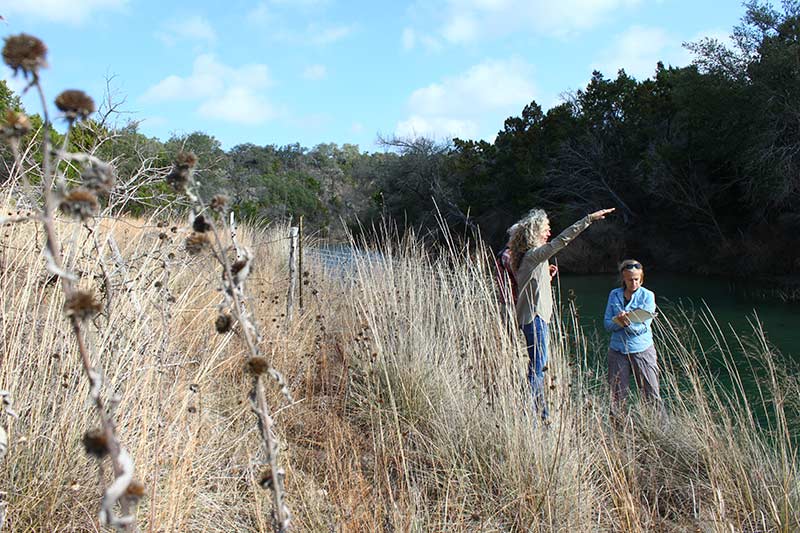
A Truly Protective Shield – Honor Award for Analysis and Planning.
For 80 years, the 6,800-acre Shield Ranch in Travis County, Texas has been managed by a family with a strong land ethic and a commitment to conservation and stewardship. As part of a team led by Andropogon Associates, we were honored to help the family and Ranch staff continue this legacy by collaborating to develop a master plan to guide the realization of their vision of a natural and cultural landscape that could be enjoyed by the family and shared with the public for generations to come. Of paramount importance was the need to protect precious water resources, including Barton Creek, which flows through the property and is a critical resource for the City of Austin. We led the effort to integrate water resource considerations through data collection and review of existing information; site inventory and analysis of opportunities and constraints for future ranch improvements; and collaborating on water management strategies. At the ASLA’s annual meeting in October, the project team was presented with an Honor Award for Analysis and Planning. For more information about this master planning project, contact Claudia Browne.
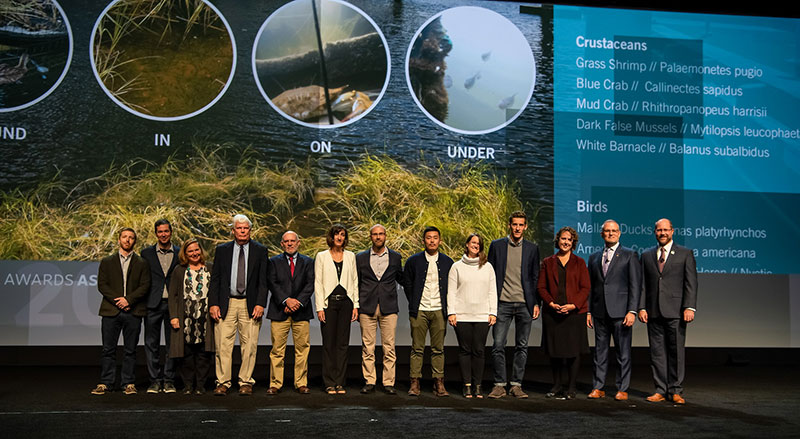
Floating Wetland at the National Aquarium Waterfront Campus – Honor Award for Research
In re-imagining its campus on two piers along Baltimore’s Inner Harbor a few years ago, the National Aquarium envisioned a living lab that enhances ecology and educates visitors about the unique habitats of the Chesapeake Bay. One such habitat is the tidal salt marsh, which has largely disappeared from the Inner Harbor’s post-industrial waterfront. As part of a team led by Ayers Saint Gross, we developed a suite of innovative technologies that provide habitat, restore ecological functions, and improve water quality in the canal between the campus’ two piers. These technologies are now being piloted at the Aquarium’s doorstep. One of them, modeled after the tidal marsh, is a floating wetland. Planted with native marsh grasses, the floating wetland prototype incorporates novel advances such as adjustable buoyancy and integrated aeration to optimize its service life and habitat offerings. This fall, at the annual meeting of the ASLA, the project team was presented with a 2018 Honor Award for Research. For more information about this project, contact Chris Streb.
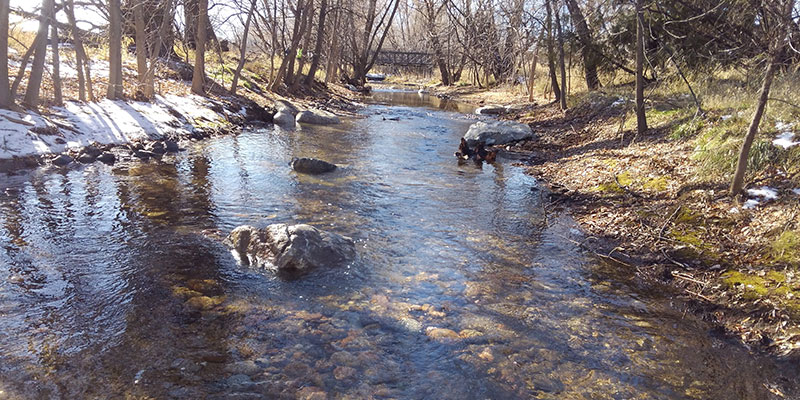
Boulder Flycasters Hooked on Stream Restoration
If there’s one thing the Boulder Flycasters love more than fishing, it’s protecting and restoring the ecosystems that make fishing possible—now and for future generations. A chapter of Trout Unlimited, the non-profit organization is an active player in the restoration of the Boulder, Colorado region’s coldwater fisheries and their watersheds. We’re honored to be partnering with the Boulder Flycasters to enhance the aquatic habitat on a segment of Boulder Creek. The project reach had been channelized during agricultural land usage and lacked the necessary habitat to sustain trout. The design-build project is funded through the City of Boulder’s Open Space & Mountain Parks Department and Colorado’s Department of Parks and Wildlife’s Fishing is Fun grant program. We are thrilled to be getting muddy with Left Hand Excavating as we implement the design we crafted to restore habitat, increase channel complexity, and improve ecological function to the creek. With its new pools, boulders, and large woody structures, the restored creek is likely to become a hot spot for fish and flycasters long into the future! For more information about this project, contact Vince Sortman.
Places
Biohabitats president and founder, Keith Bowers, will deliver a presentation at the New Jersey American Society of Landscape Architects Annual Conference February 10-12 in Atlantic City, New Jersey. The meeting’s theme, “Design + Nature: A Celebration of Ian McHarg,” is inspired by the 50th anniversary of the publication of his book, Design With Nature. Keith is a founding board member of the University of Pennsylvania’s Ian L. McHarg Center for Urbanism and Ecology.
Want to learn how a 100-year-old golf course has been transformed into an urban eco-park? Join Jennifer Grieser of Cleveland Metroparks, and Biohabitats ecological engineer Suzanne Heohne for their presentation of “Fore to Forest for Fins & Feathers: Transforming Acacia Country Club” at the Upper Midwest Stream Restoration Symposium in LaCrosse Wisconsin February 24-27.
On March 7th Keith Bowers will visit the University of Georgia, College of Environment and Design in Athens, Georgia to present a lecture to students, faculty, alumni and the greater Athens community. Keith will talk about Biohabitats’ approach to protecting and restoring ecosystems in a rapidly changing world.
Joe Berg will entertain participants at the annual Watershed Congress Along the Schuylkill on March 9th with tales and exciting information about stream restoration using engineered wood structures instead of rock!
As part of the University of Colorado Denver College of Architecture and Planning Spring 2019 Guest Lecture Series (open to the public), Keith Bowers will present an evening lecture March 18. Keith will share strategies and case studies on climate change adaptation, whole-systems water management, and urban ecology initiatives.
People
Meet our newest team members!
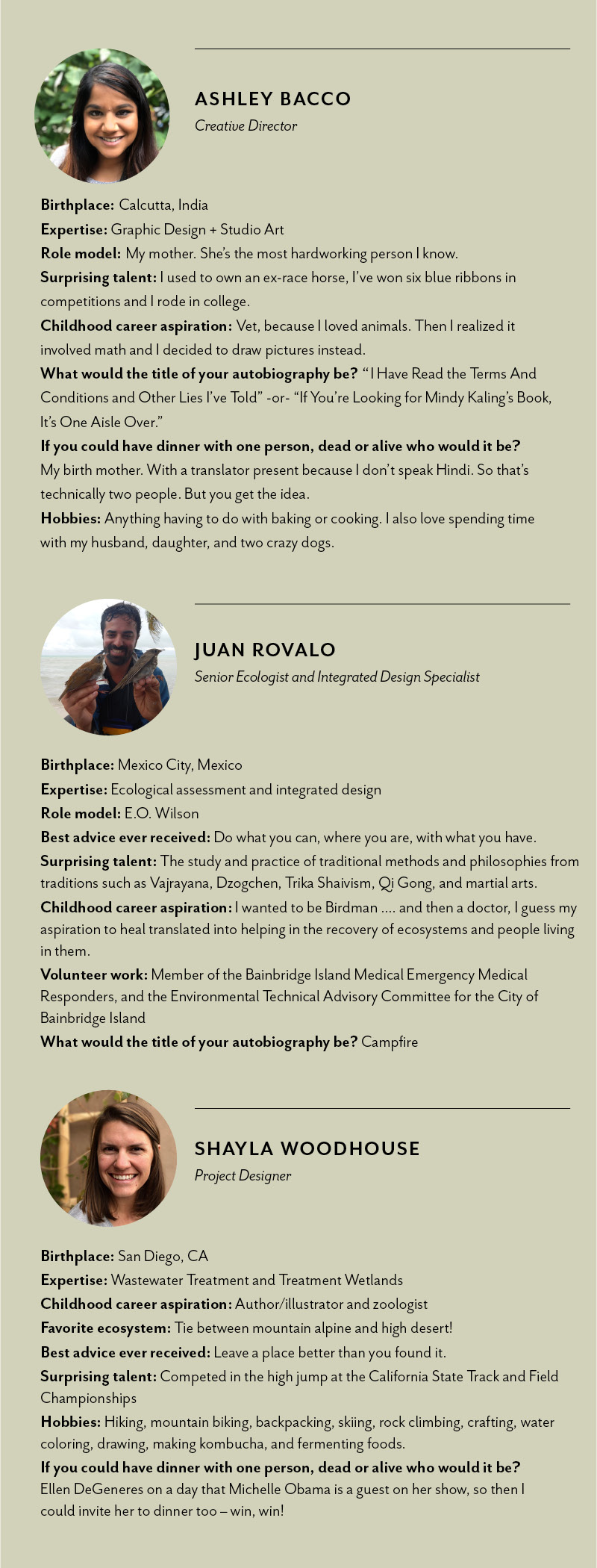
Golden Acorn Winner
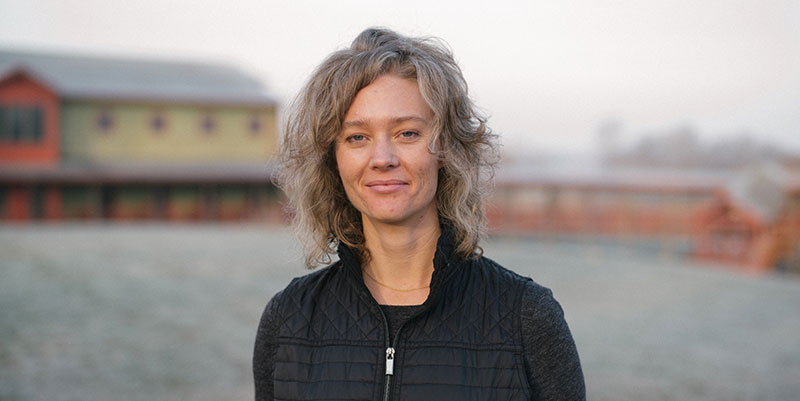
Every quarter, we award one staff member with the Golden Acorn, an award recognizing an employee who embodies Biohabitats mission and values. The gold color symbolizes purity of purpose in protecting and defending nature, and the acorn symbolizes strength of resolve. Nominees are submitted by the staff. Our most recent Golden Acorn winner was Landscape Architect, Andi Rutherford. Recipients of the Golden Acorn get to direct a monetary donation to the non-profit organization of their choice. Andi directed her donation to two organizations for whom she has volunteered: Confluence Ministries, a Denver community development organization, and eMi, an international design non-profit.
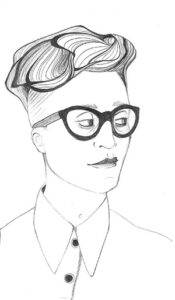
Drawing Talent
The illustration that appears in the introduction to this issue was done by our ubertalented team member, Emma Quinn. You can reach Emma at equinn@biohabitats.com.
Join our Team
Biohabitats offers unlimited opportunities for professional and personal growth, amazing benefits including unlimited leave, and a commitment to give back to the communities in which we live and work. If this sounds like the kind of work environment you seek, check out our current openings.